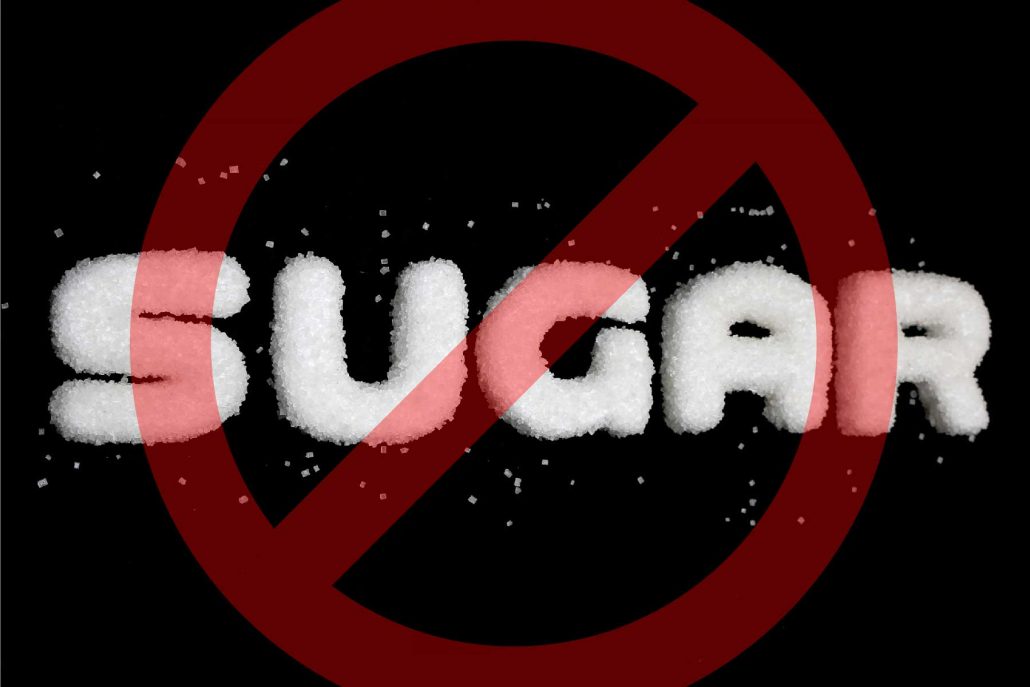Added sugar is undoubtedly one of the single worst ingredients in the modern diet. Because there is no protein, essential fats, vitamins or minerals in sugar it is often refer to as empty calories.
It is now well established that when people eat just 10 percent of their daily calories as sugar it can become a major contributing factor for weight gain and nutrient deficiencies, which increases the risk for chronic diseases like diabetes, heart disease, and cancer.
Over the years I’ve been able to help many of my clients seriously reduce the amount of added sugar in their diet by simply teaching them to pay more attention to these 7 simple tips.
1. Begin with beverages
You’re not exactly “eating” a soda, but the calories and added sugar still counts. Today, Americans consume 200 to 300 more calories per day than they did 30 years ago, and nearly half of those calories come from sugary drinks.
Soda is the most recognized culprit as far as sugar-sweetened beverages are concerned, but other soft drinks like fruit punch, lemonades, and energy drinks typically have as much ‘or more’ added sugar as full-calorie soda. Cutting down from two per day to one can add up to 16 pounds of weight loss in a year.
2. Know your nicknames
Food manufacturers have come up with some pretty creative names for added sugar over the past few years, making it nearly impossible to pick them out if you don’t know what you’re looking for.
Here are 30 of the most common names used for sugar on labels:
Agave Nectar • Barley malt • Beet sugar • Brown sugar • Buttered syrup • Blackstrap molasses • Cane juice crystals • Cane sugar • Corn syrup • Corn syrup solids • Crystalline fructose • Dextrin • Dextrose • Evaporated cane juice • Fructose • Fruit juice concentrate • Glucose solids • Golden sugar • High Fructose Corn Syrup • Invert sugar • Lactose • Maltodextrin • Maltose • Malt syrup • Molasses • Raw sugar • Refiner’s syrup • Rice syrup • Sucrose • Turbinado sugar
3. Navigate ingredient lists
Now that you can spot added sugars in a list of ingredients, it’s time to start reading them! Going completely added-sugar free is nearly impossible, but this simple trick can help you find healthier options in the supermarket.
When comparing foods with added sugars such as cereals, breads and salad dressings, go for the ones that contain less than 3g of sugar per serving, or ones that list sugar as the 5th ingredient or later. Since ingredients are listed by weight, the later sugar appears on the list the less you’ll be eating.
4. Spot the sneaky sources
Foods don’t necessarily have to taste sweet to contain added sugar. In fact, sugar is present in most of the packaged foods we consume, even the savory ones you’d never suspect. Some common sneaky sources of added sugar are: Packaged breads, salad dressing, Asian sauces, frozen dinners, cereals, fruit spreads, yogurt, instant oatmeal, vitamin enhanced waters, non-dairy milks and tomato sauces.
5. Swap in fruit
Instead of pouring sugar sweetened vinaigrette dressing all over your salad, add some fresh berries or sliced fruit. Same goes for yogurt: skip the fruit-at-the-bottom goop, and add fresh berries and nuts to plain yogurt instead. Fruit is a wonderful, natural source of sugar that also provides your body with fiber, vitamins, and minerals.
6. Make dessert special
I’m not saying never have them, but save the cookies, ice cream, cheesecake, and soda for special occasions, like a nice dinner out with friends or a weekend barbeque. If your meal needs a sweet finish, prep a big bowl of fruit salad on Sunday to help you curb any after-dinner cookie cravings during the week.
7. Realize it’s not all or nothing
Just because you want to “stop eating added sugar” doesn’t mean you need to cut out every last gram. Yes, you can still enjoy ketchup on your cheeseburger and your afternoon square of dark chocolate.
To put a serious dent in decreasing your intake, start with the biggest sources, like soda, and foods you eat frequently, such as sandwich bread. Picking up no-sugar-added packaged foods, like pasta sauce and dressings, is another great place to start.


